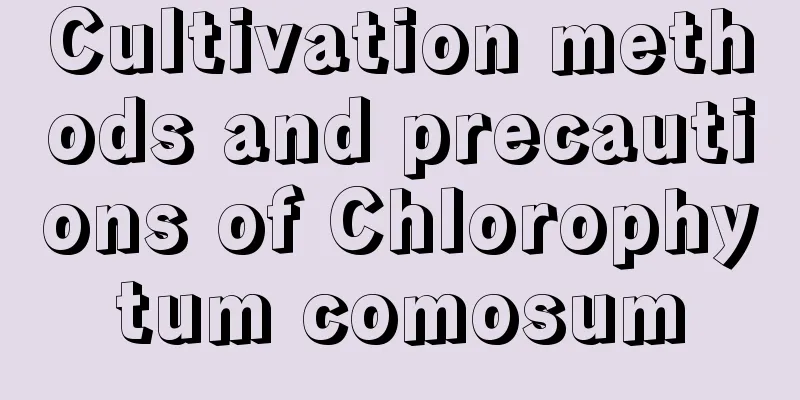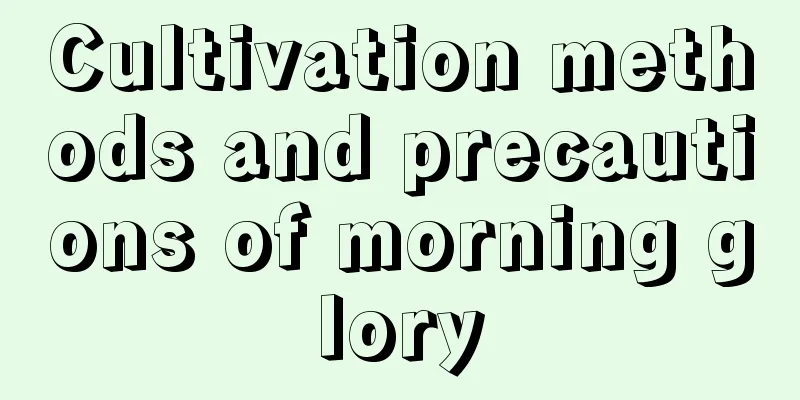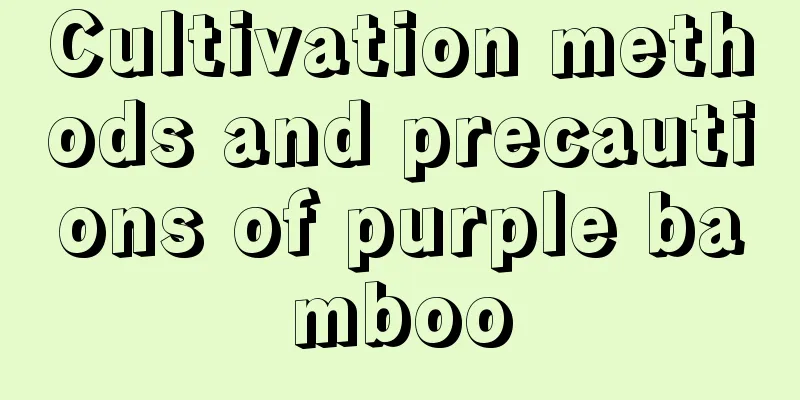Cultivation methods and precautions of Chlorophytum comosum

1. Maintenance methods1. Sunlight: Chlorophytum comosum is a relatively shade-loving plant. When growing it, it can be placed in a dark place for a short period of time. When the sun is strong in summer, you must pay attention to shielding it. It is completely fine to place it in a semi-shaded place at other times. 2. Watering: Try to keep it moist during cultivation. It likes a humid growing environment very much, and hydroponics is also possible. If it is soil culture, be careful not to allow water to accumulate, especially in winter, and the amount of watering should be strictly controlled. 3. Temperature: It is a plant that likes warm and humid environment. The best cultivation temperature is between 20-24℃. Pay attention to temperature control in winter and summer. Too high temperature will cause yellow leaves, and too low temperature will even cause it to stop growing. 4. Fertilization: In spring and summer, it is the season of vigorous growth. At this time, you should apply enough fertilizer to it. In autumn and winter, its growth begins to slow down. At this time, you should mainly use foliar fertilizer or liquid fertilizer, and reduce the amount of fertilizer. 2. Breeding techniques1. Pruning: Generally speaking, the growth of spider plants and green radishes is relatively random. When pruning, you need to pay more attention to the shape to ensure its growth quality. When its branches grow too long, you can cut off the part that exceeds 20 cm in length. 2. Repotting: The steps for repotting spider plants and green ivy are also very simple. First, take it out of the original soil and gently drain the soil at the roots. It’s okay to keep a little bit. Also, be sure to cut off the rotten and dried roots. It’s best to soak them in a solution of carbendazim. After drying, you can put it directly into the pot. It would be better to add some organic fertilizer to the new soil. 3. Problem diagnosis and treatment1. Yellowing leaves: There are many reasons for yellowing leaves. The most common ones are too much fertilizer or insufficient water. It may also be caused by long-term waterlogging leading to root rot. If the fertilizer burns the roots severely, the soil must be changed. Proper control will be enough if it is caused by water imbalance. 2. Diseases: Common diseases of Chlorophytum comosum and Chlorophytum comosum include root rot and leaf spot. The main reason is that you don't pay attention to ventilation during normal breeding. Cut off the diseased leaves in time, spray carbendazim solution, and keep the breeding environment ventilated. IV. Other issues1. Can it be raised in the bedroom: If it is used for viewing, it can be raised anywhere, but one thing to note is that it will consume oxygen at night. If the bedroom space is small, it is better to open the window for ventilation or not raise it. 2. Toxicity: There is no problem in daily breeding, but its juice is slightly toxic. If it comes into contact with the skin, it will cause redness, swelling and itching, so you need to pay more attention to it. |
<<: Breeding methods and precautions of Emperor Crown
>>: Cultivation methods and precautions of lilac
Recommend
Chicory sowing propagation method
Chicory seed propagation Seed treatment One week ...
How to propagate Verbena and when to take cuttings
1. Seed propagation 1. Sowing time: The sowing ti...
How to propagate Perilla and what to pay attention to
Perilla propagation method Perilla can be propaga...
Which month is best for sowing lentils?
Hyacinthus lentil , also known as black-eyed pea ...
Cultivation methods and precautions of Zhulan
Pearl orchid is relatively easy to grow, has a ce...
What soil to use for planting freesia
1. Requirements for soil quality (1) First, let’s...
How to make bonsai of Albizia Julibrissin
Select tree species The best tree species is a tr...
The difference between Elsholtzia and Patchouli
1. Difference of blades The leaves of Elsholtzia ...
Where does creeper grow? Can it survive the winter in the north?
1. Where is it located? Ivy can grow in a wide ra...
How to propagate jasmine by cuttings
1. Taking cuttings Choose relatively strong jasmi...
Other names and elegant names of flowers
1. King of Flowers The king of flowers refers to ...
How to grow cornflowers in spring
1. Proper pruning The purpose of spring pruning i...
What to do if the roots of Kalanchoe turn black
1. Re-insert 1. When we find that its roots have ...
What is cinnamon and what are its benefits?
1. What is Cinnamon is its scientific name, also ...
How to deal with pig bite racks
Pig farmers, especially those who raise pigs on a...









